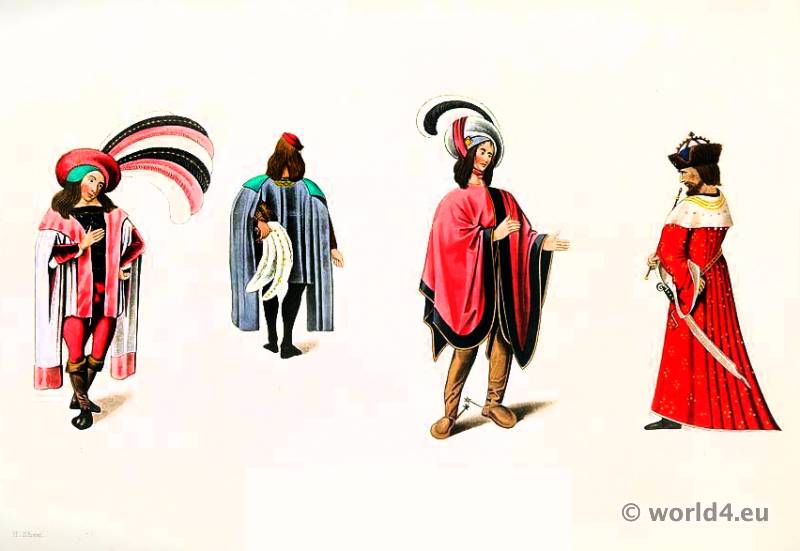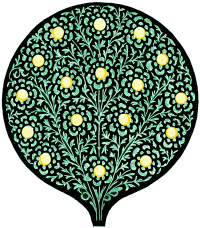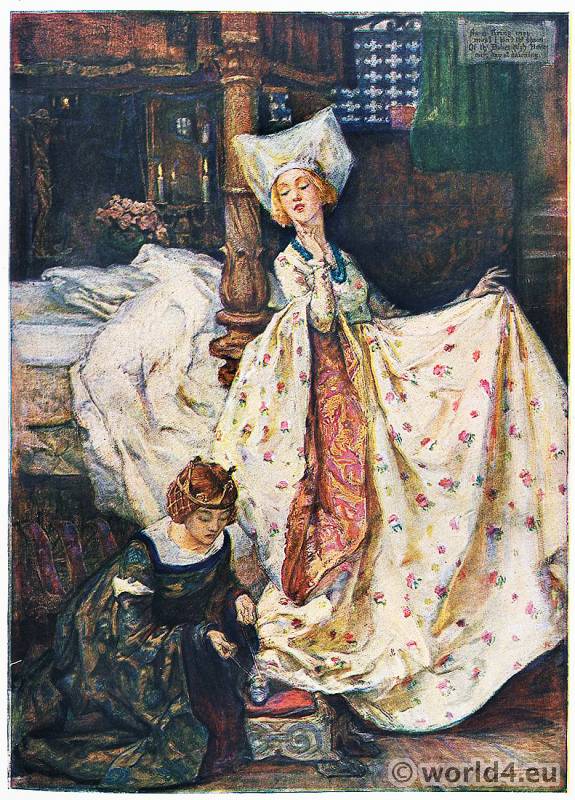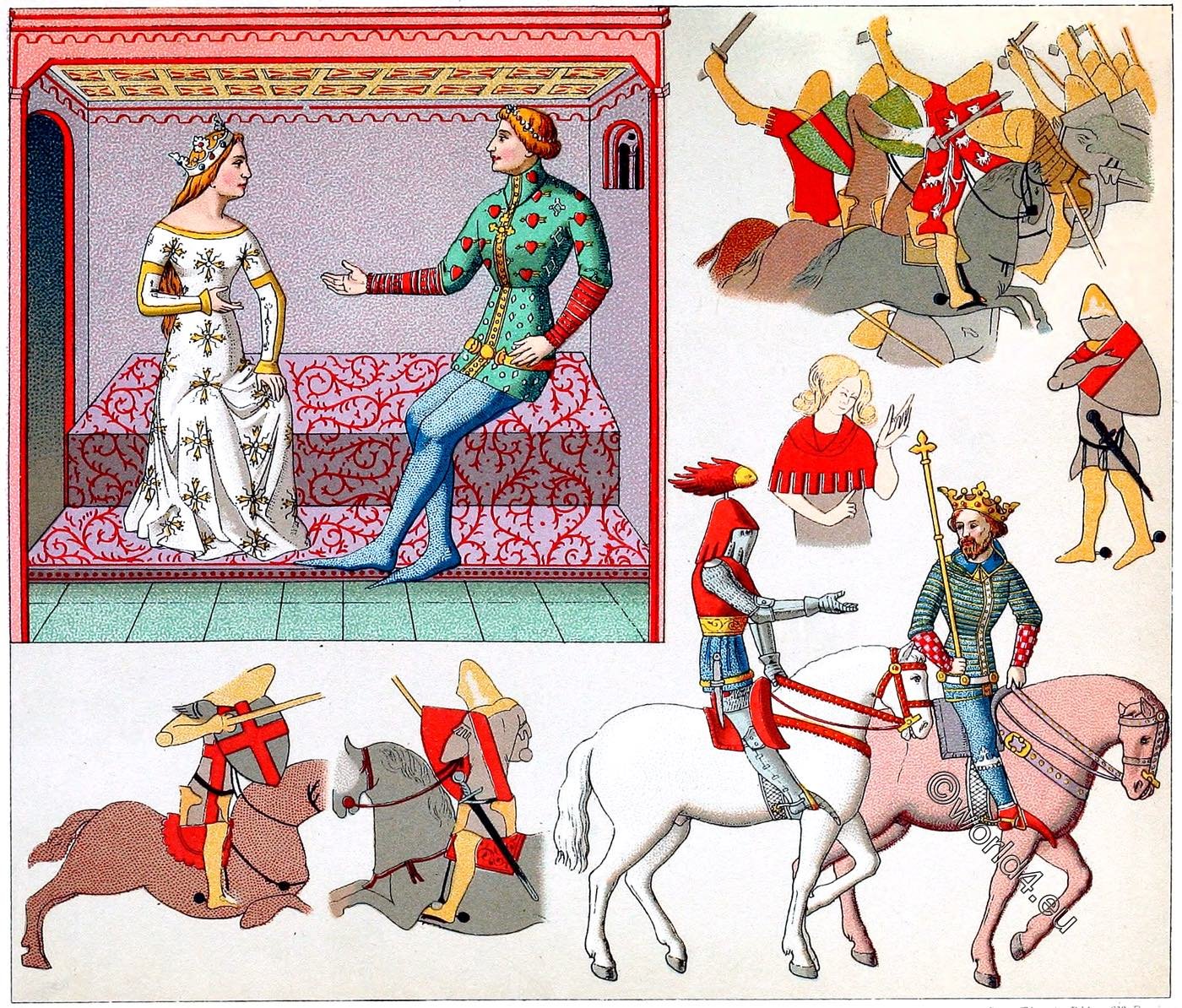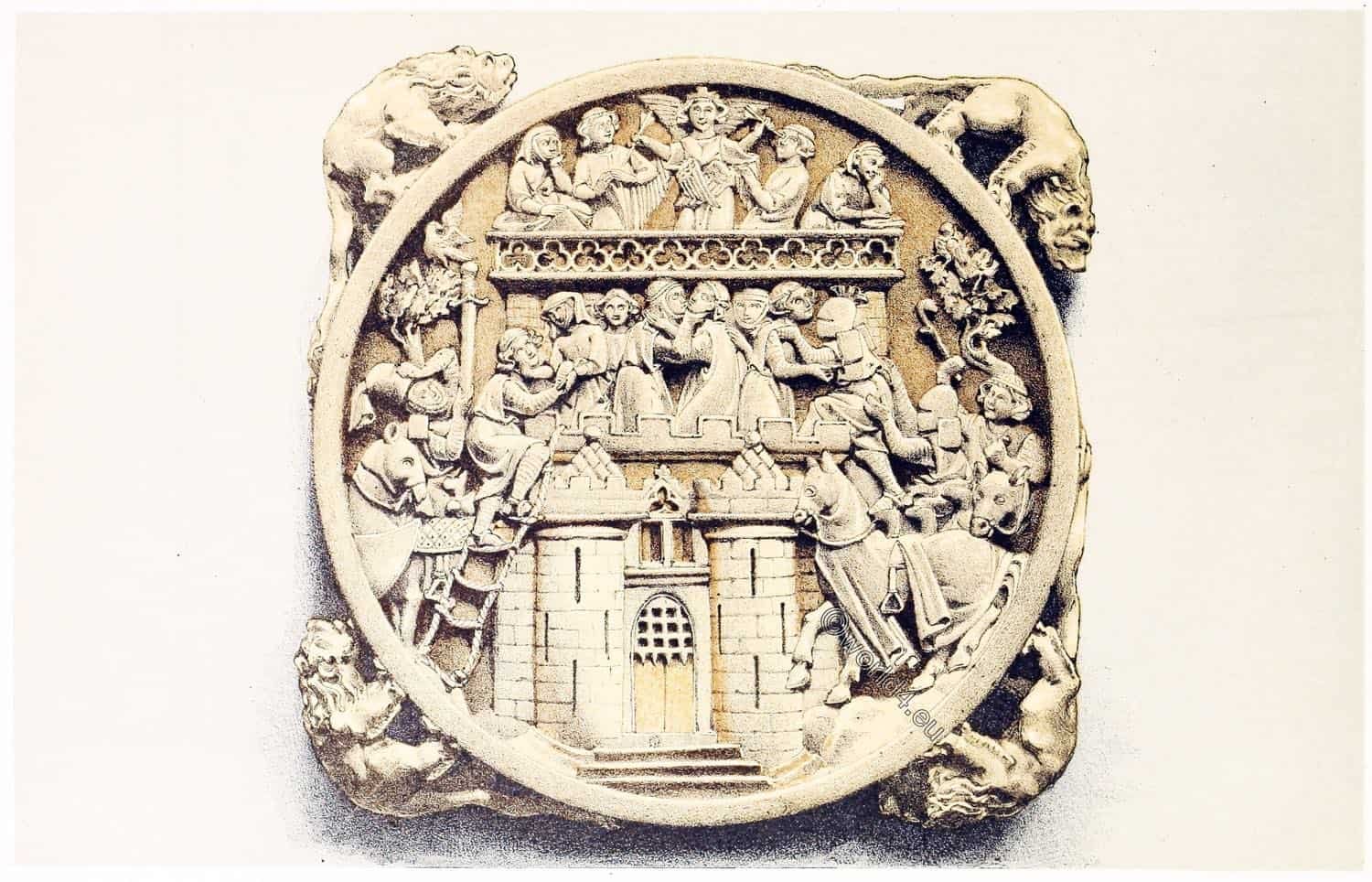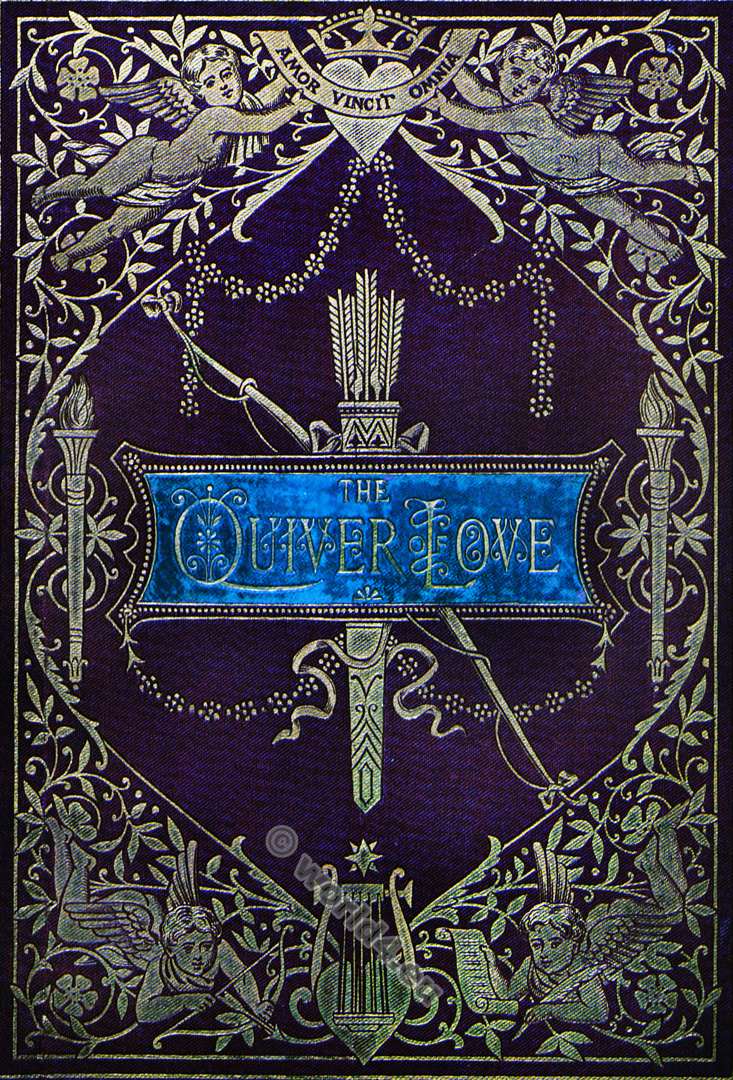The Romance of the Rose. The Art of courtly love. 15th century.
WE have already given an account of this curious literary production, and a brief analysis of the commencement.
The plot of the romance, or allegory, is very uninteresting. After having admired the pictures on the wall already mentioned, the dreamer finds the gate, which is opened to him by Idleness, the gate-keeper, and he enters a beautiful garden. Courtesy introduces the visitor to Pleasure, the proprietor of the garden, who was in the midst of his court.
While the stranger is contemplating the beauty of the ladies in the court of Pleasure, he is pursued by Love, who is armed with five arrows. The fugitive arrives at a fountain, beholds a beautiful rose-tree, and is seized with the desire of gathering a rose; at the same moment he becomes an easy conquest to his pursuer.
The rest of the poem is employed in relating the troubles and disappointments which the Lover, for such it appears is the name of the dreamer, experiences in his attempts to obtain the rose, on which he has set his desires. In the course of these attempts, one of his rudest opponents is Danger, and his most powerful opponent is Reason. A very large portion of the poem is taken up with the discourses of the latter. Bel Acueil, the ally and friend of the adventurous lover, is seized and imprisoned in a tower by Jealousy; but both are befriended by Love and his mother Venus, the tower is stormed, and the Lover finally succeeds in his object.
Three of the figures here represented are taken from the magnificent manuscript of the Romance of the Rose already described.
The figure in a riding dress was furnished by another manuscript of the same age (MS. Reg. 19, C. VIII). Three of these figures afford singularly curious examples of the costume of the dandies of the latter half of the fifteenth century.
One of them is in his riding dress: the other two are decked out in the court dress of the period. The robe with its “Sleeves blazing like unto a cranes winges.” (as they are characterized by a contemporary satirist), reminds us of the form preserved in the gowns which are still worn in the universities. The different articles of a man’s apparel, as indicated in books of this time, are a shirt (often bordered with rich lace), ‘breech,’ a petticoat, a doublet, a long coat, a stomacher, hose, socks, and shoes.
One of the most remarkable articles of dress of a gallant of this period, was the large plumed hat, which, as here represented, was generally slouched on one side, so as to expose to view part of an under cap of embroidered velvet or gold net-work.
The second figure on our plate carries his plumed hat in his hand, behind him, while he has a small cap of another description perched on the top of his head. In some illuminations, the gallant, still having this little cap on his head, carries the plumed hat slung over his shoulders by means of a cord; just in the same manner as the boys at the present day, in many charity schools, are made to hang their hats round their necks with a string. This was done probably more for convenience than ornament.
The hair at this period was worn very long; and it was the fashion to wear shoes which were very broad in front.
The wood-cut at the foot of this page, is a very fine representation of an organ, taken from a painting of St. Cecilia, by Lucas Van Leyden.
Source: Dresses and Decorations of the Middle Ages from the 7th to the 17th centuries by Henry Shaw F.S.A. Published: London William Pickering 1843.
Related
- Costumes and Fashion during the 15th century.
- The Hennin. Headdresses of the 15th century.
- The Lady of Tournament.
- Fashion in the Reigns of Charles VI. and Charles VII. 1380 to 1461.
- Fashion in the Reigns of Louis XI, Charles VIII, and Louis XII. 1461 to 1515
- Christine de Pizan and Queen Isabeau of Bavaria.
- Margaret of Anjou Queen of Henry VI. and her court.
- The Limerick Mitre.
- Pyrrhus Receiving the Honor of Knighthood.
Discover more from World4 Costume Culture History
Subscribe to get the latest posts sent to your email.

